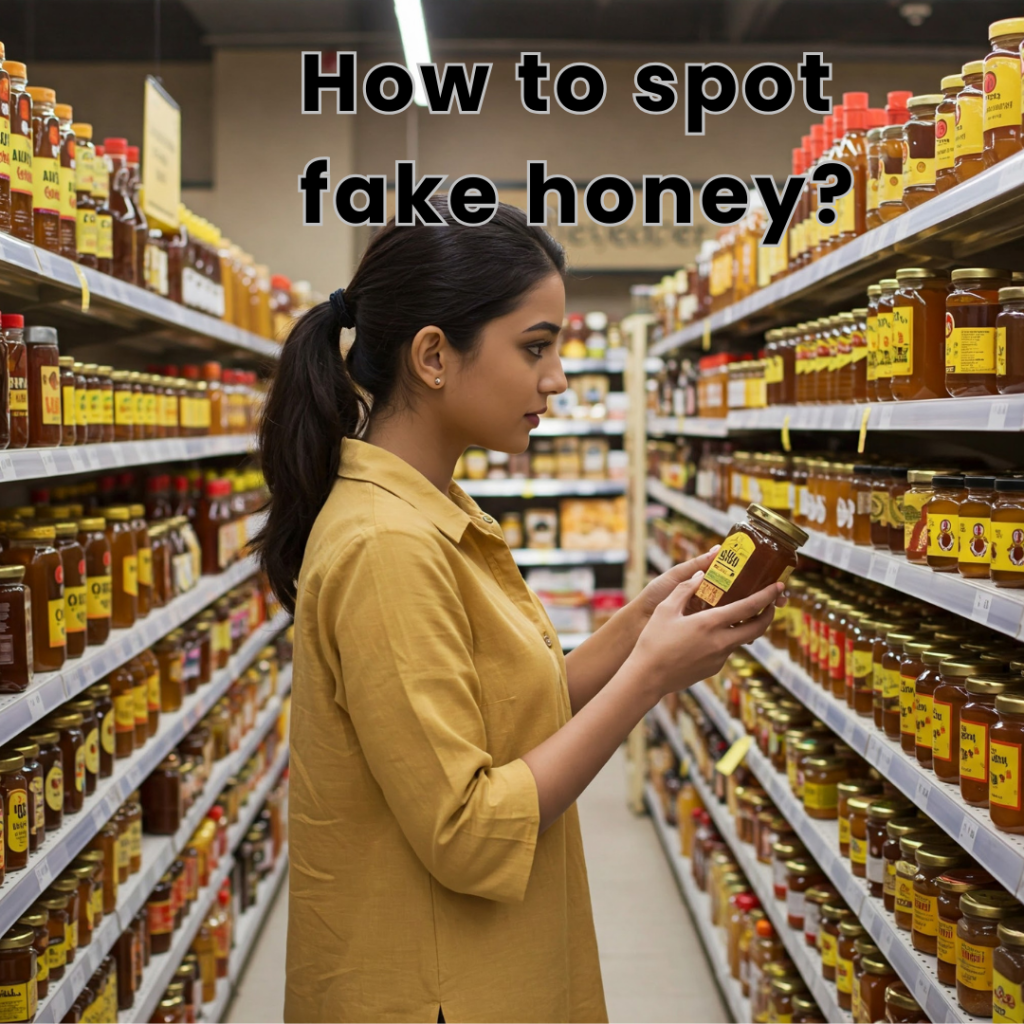The Growing Demand for Pure Honey.
In today’s fast-moving world, more and more Indians are turning to nature for answers — and pure honey has become one of the most sought-after natural products.
As people grow more health-conscious, the demand for authentic honey is rising rapidly across India.
Yes, the supply has increased.
But here’s the shocking part: Most of the honey sold as “pure honey” is actually adulterated with synthetic syrups.
From commercial giants to local sellers, fake honey is everywhere.
These synthetic versions are designed to fool not only home tests but even official lab standards.
So while supermarket shelves may seem stocked, genuine, unaltered honey is becoming rare.
The Challenges of Fake Honey
Let’s explore how fake honey is damaging both health and the market for pure honey.
Most fake honey is made from cheap sugar syrups — invert sugar, rice syrup, corn syrup, or even synthetic chemicals.
Consuming these over time can affect your health.
Worse still, this widespread adulteration is destroying trust in the natural honey industry.
Honest producers, who harvest and pack genuine honey, cannot match the prices or production scale of those selling fake versions.
Why does fake honey dominate? It’s cheaper, shinier, more uniform — and easier to mass-produce.
But what’s easy is often not real — and certainly not pure.
Expert Tips for Spotting Fake Honey
So, how can you tell if you’re buying pure honey?
Here are five expert red flags:
1. Price.
If the price is too low — or there’s a “Buy 1 Get 1” offer — it’s unlikely to be authentic honey. Real beekeeping, packaging, and testing costs money.
2. Appearance.
Too clear, glossy, or syrup-like? Be suspicious.
Raw, natural honey is often turbid and may crystallize — a good sign of purity.
3. Aroma.
Pure honey has a soft floral fragrance. No smell or a sugary scent usually means it’s not the real deal.
4. Label & variety.
Avoid brands that only say “pure honey” with no mention of the floral source — like jamun, ajwain, litchi, etc.
Real honey should be traceable and specific.
5. Wild honey myths.
If someone claims “wild honey” but it looks thick and shiny, it’s likely fake. Authentic wild honey is usually runnier and slightly cloudy.
Remember — even these checks only hint at purity. The only way to verify truly pure honey is through advanced lab tests like NMR, LC-HRMS, or carbon isotope testing.
How to Choose real Honey
Now that you understand the risk, here’s how to find pure honey you can trust:
1. Choose genuine brands.
Look for companies that show lab reports, floral origin, and source information. Genuine honey sellers have nothing to hide.
2. Demand advanced testing.
Basic FSSAI parameters are not enough.
Reliable brands will share NMR, C4, and LC-HRMS test reports to prove their natural honey is unadulterated.
3. Buy from the source.
Whether directly from a beekeeper or from a brand like Bharat Honey, choose suppliers that have close access to authentic honey sources.
Transparency is the strongest sign of purity.
Conclusion & Call to Action
This is not just a food issue — it’s about trust.
Every time you unknowingly buy adulterated honey, you support a broken system that pushes pure honey producers to the edge.
But when you choose genuine honey like Bharat honey, you support sustainable beekeeping, protect nature, and demand honesty in food.
Take action now:
-
Don’t fall for the cheapest offer.
-
Always ask for floral origin.
-
Look for advanced purity test reports.
-
Support brands that source real honey, not sugary imitations.

